Jewels of Asia – Angkor Wat ( 2001 ) Last Updated: May 30, 2024
On our way back from Japan we planned to take a short holiday that included Phuket in Thailand and Angkor Wat in Siem reap in Cambodia.
Our trip to Cambodia to see Angkor Wat temple was inspired by our friends who went there recently.
We flew in from Phuket directly to Siem reap
Angkor Wat is a Hindu-Buddhist temple complex in Cambodia.
Our Trip
We stayed at a modest hotel in Siem Reap. As advised by friends we used to go for our sight seeing in two sessions. Morning between 10 in the morning till one in afternoon. After that it was lunch break. We picked up a variety of fruits on our way back. Had a light lunch and rested. after that we were ready to go back.
Angkor Wat
Importance of Angkor Wat
If I have to write about Angkor Wat I would say it is difficult to describe. It’s something to be seen to be believed. So in brief I will write a paragraph to describe the importance of Angkor Wat and reasons for it’s glory.
Angkor, in Cambodia’s northern province of Siem Reap, is one of the most important archaeological sites of Southeast Asia. It extends over approximately 400 square kilometres and consists of scores of temples, hydraulic structures (basins, dykes, reservoirs, canals) as well as communication routes. Angkor Archaeological Park contains the magnificent remains of the different capitals of the Khmer Empire, from the 9th to the 15th century. They include the famous Temple of Angkor Wat and at Angkor Thom, the Bayon Temple with its countless sculptural decorations. For several centuries Angkor, was the centre of the Khmer Kingdom. With impressive monuments, several different ancient urban plans and large water reservoirs, the site is a unique concentration of features testifying to an exceptional civilization. Temples such as Angkor Wat, the Bayon, Preah Khan and Ta Prohm, are examples of Khmer architecture, The architecture and layout of the successive capitals bear witness to a high level of social order and ranking within the Khmer Empire. Angkor is therefore a major site exemplifying cultural, religious and symbolic values, as well as containing high architectural, archaeological and artistic significance.
Angkor Wat, temple complex at Angkor, near Siem Reap, Cambodia, was built in the 12th century by King Suryavarman II (reigned 1113–c. 1150). The vast religious complex of Angkor Wat comprises more than a thousand buildings, and it is one of the great cultural wonders of the world. Angkor Wat is the world’s largest religious structure, covering some 400 acres (160 hectares), and marks the high point of Khmer architecture.
The city of Angkor served as the royal center from which a dynasty of Khmer kings ruled one of the largest, most prosperous, and most sophisticated kingdoms in the history of Southeast Asia. From the end of the 9th century until early in the 13th century, numerous construction projects were undertaken, the most notable of which was Angkor Wat. It was built by Suryavarman II as a vast funerary temple within which his remains were to be deposited. Construction is believed to have spanned some three decades.
The Angkor complex represents the entire range of Khmer art from the 9th to the 14th centuries, and includes a number of indisputable artistic masterpieces (e.g. Angkor Wat, the Bayon, Banteay Srei).
The influence of Khmer art as developed at Angkor was a profound one over much of South-east Asia and played a fundamental role in its distinctive evolution.
The Khmer Empire of the 9th-14th centuries encompassed much of South-east Asia and played a formative role in the political and cultural development of the region. All that remains of that civilization is its rich heritage of cult structures in brick and stone.
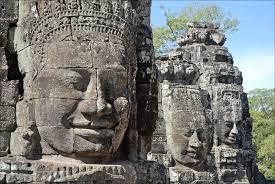
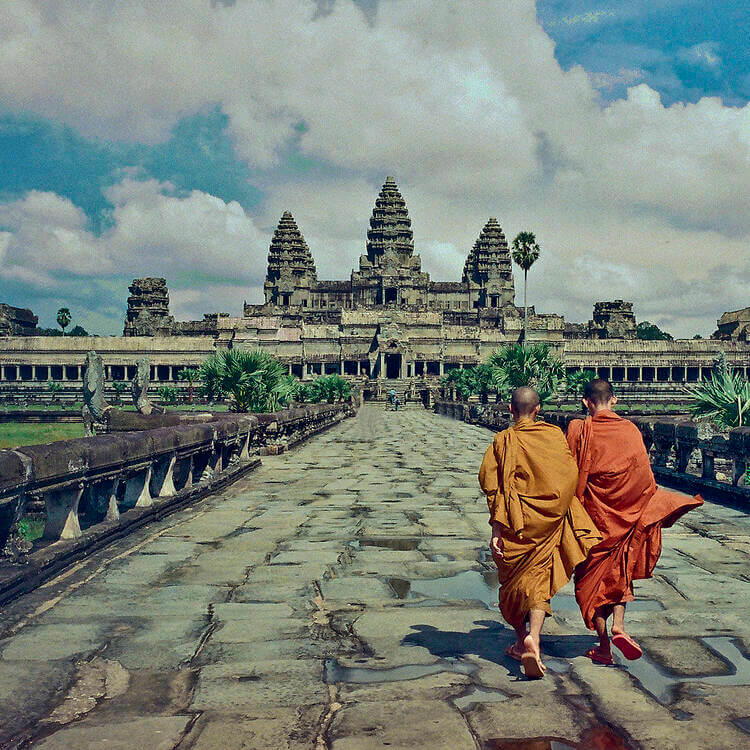
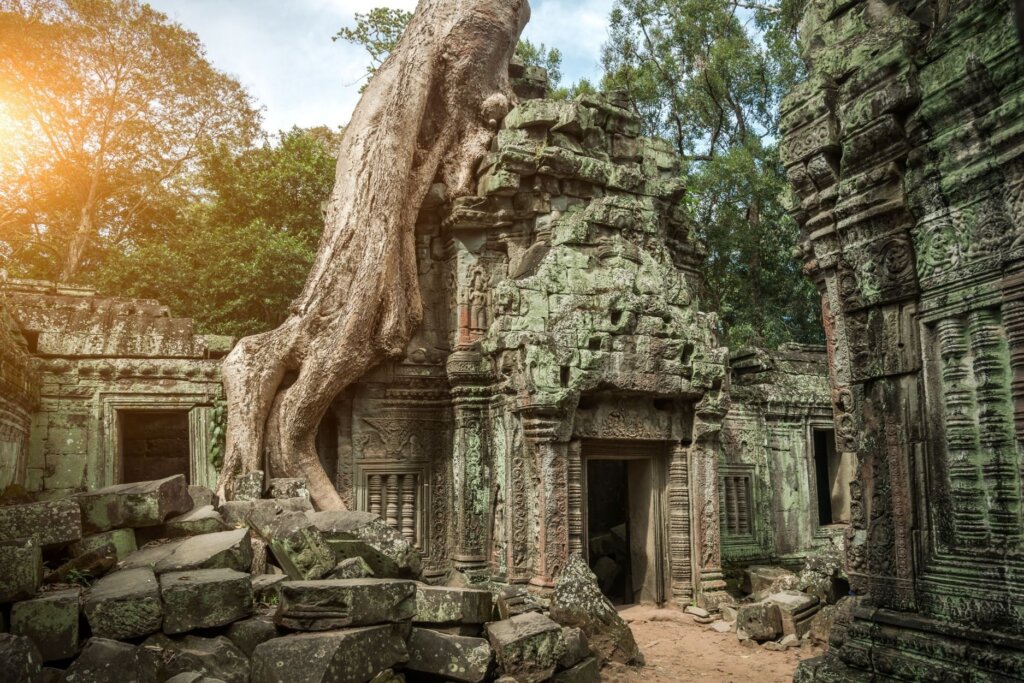
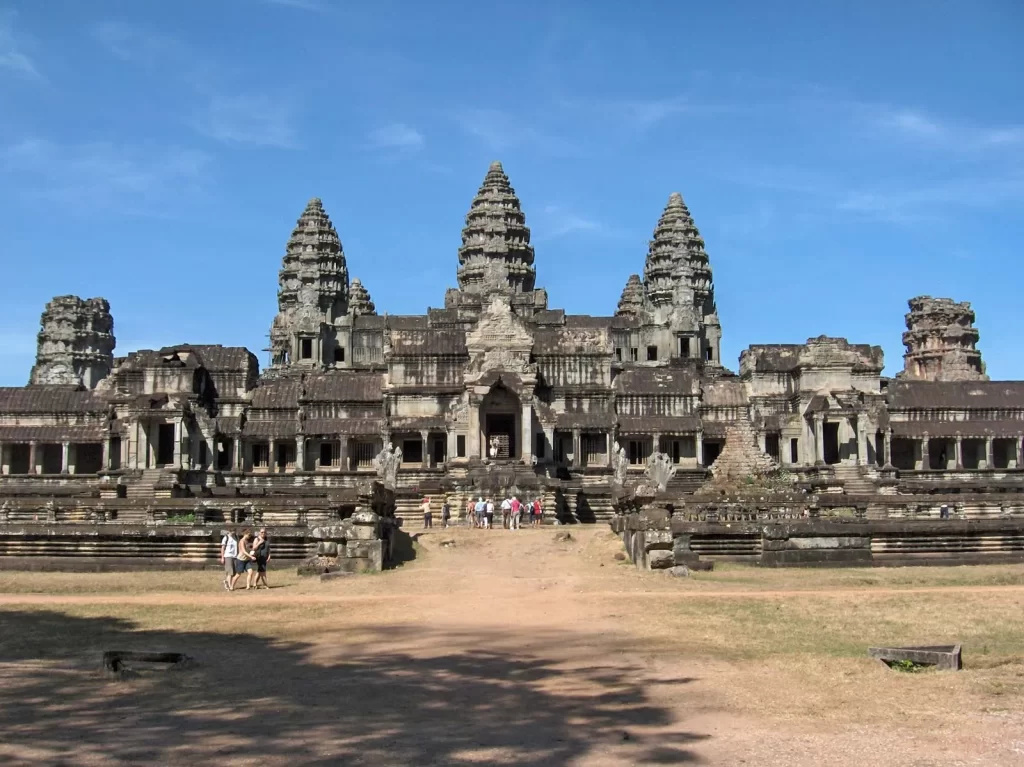
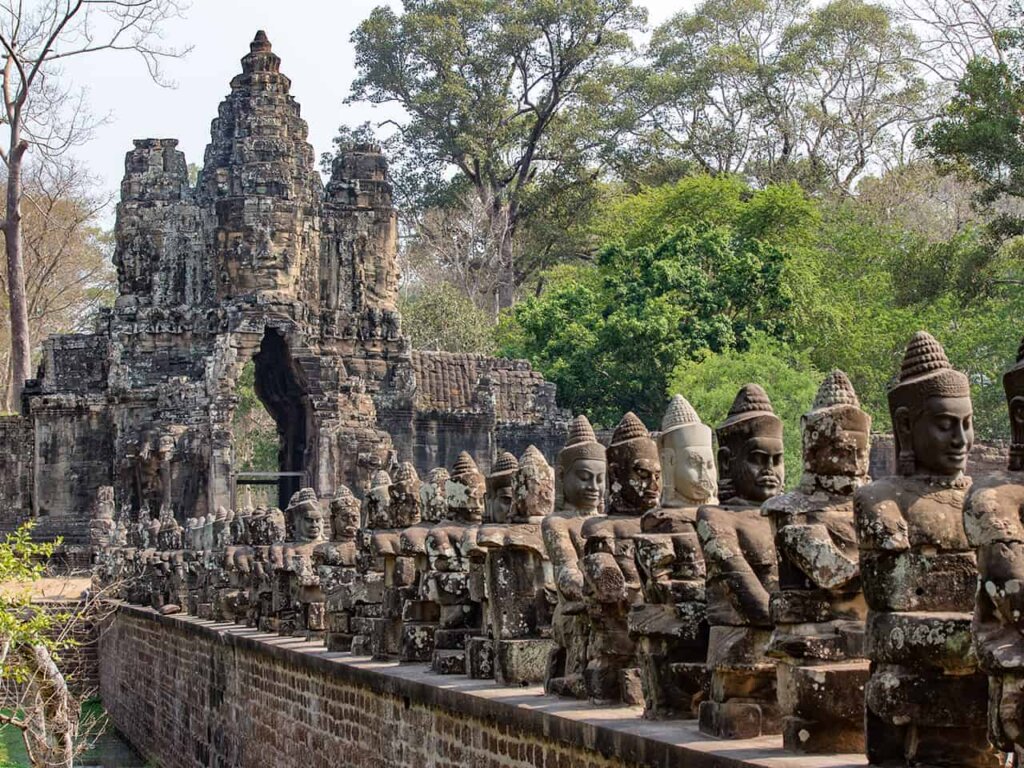
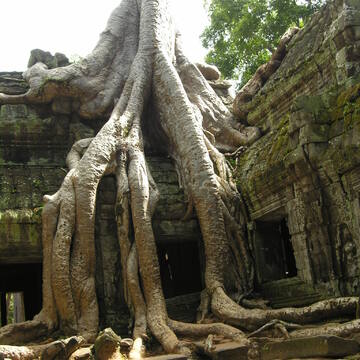

All of the original religious motifs derived from Hinduism, and the temple was dedicated to the gods Shiva, Brahma, and Vishnu. The five central towers of Angkor Wat symbolize the peaks of Mount Meru, which according to Hindu mythology is the dwelling place of the gods. The mountain is said to be surrounded by an ocean, and the complex’s enormous moat suggests the oceans at the edge of the world. A 617-foot (188-meter) bridge allows access to the site. The temple is reached by passing through three galleries, each separated by a paved walkway. The temple walls are covered with bas-relief sculptures of very high quality representing Hindu gods and ancient Khmer scenes as well as scenes from the Mahabharata and the Ramayana.
After the Cham people of modern-day Vietnam sacked Angkor in 1177, King Jayavarman VII (reigned 1181–c. 1220) decided that the Hindu gods had failed him. When he built a new capital nearby, Angkor Thom, he dedicated it to Buddhism. Thereafter, Angkor Wat became a Buddhist shrine, and many of its carvings and statues of Hindu deities were replaced by Buddhist art.

In the early 15th century Angkor was abandoned. Still Theravada Buddhist monks maintained Angkor Wat, which remained an important pilgrimage site and continued to attract European visitors. Angkor Wat was “rediscovered” by explorer Henri Mouhot after the French colonial regime was established in 1863.
In 1992 the Angkor complex, which included Angkor Wat, was designated a World Heritage site by UNESCO and was immediately added to the list of World Heritage in Danger. In the ensuing years, restoration efforts increased, and Angkor was removed from the danger list in 2004. Today Angkor Wat is one of the most important pilgrimage shrines in Southeast Asia and a popular tourist attraction. The temple complex appears on the Cambodian flag.
Angkor Thom
Angkor Thom meaning ( “Great City”) located in present-day Cambodia was the last and most enduring capital city of the Khmer Empire. It was established in the late twelfth century by King Jayavarman VII. It covers an area of 9 km², within which are located several monuments from earlier eras as well as those established by Jayavarman and his successors. At the centre of the city is Jayavarman’s state temple, the Bayon, with the other major sites clustered around the Victory Square immediately to the north.
The site is one of the major tourist attractions of Southeast Asia.The city lies on the west bank of the Siem Reap River, a tributary of Tonle Sap, about a quarter of a mile from the river. The south gate of Angkor Thom is 7.2 km north of Siem Reap, and 1.7 km north of the entrance to Angkor Wat.
There are gates at each of the cardinal points, from which roads lead to the Bayon at the centre of the city. As the Bayon itself has no wall or moat of its own, those of the city are interpreted by archaeologists as repr
